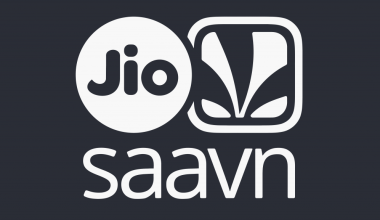In the digital age, essential metadata for Spotify is more important than ever for artists looking to maximize their reach and engagement on the platform. Metadata serves as the backbone of music distribution, ensuring that your songs are easily discoverable and properly credited. In this comprehensive guide, we’ll delve into the critical elements of Spotify metadata and how you can optimize it to enhance your presence on the platform.
What is Metadata?
Metadata is the information that accompanies your music files and helps categorize and identify your tracks. On Spotify, metadata includes a variety of details such as song title, artist name, album name, genre, release date, and more. Properly formatted and accurate metadata is crucial for ensuring your music is searchable and correctly attributed on the platform.
Importance of Metadata
Essential metadata for Spotify plays a pivotal role in how your music is presented and discovered. Accurate metadata ensures that your tracks are listed correctly, appear in relevant searches, and are eligible for playlist placements. Without proper metadata, your music could be misrepresented, making it harder for listeners to find and enjoy your work.
Key Components of Spotify Metadata
1. Song Title
The song title is a primary identifier for your track. It should be concise, accurate, and free of unnecessary information. Avoid adding extraneous details like version numbers or remix identifiers within the title unless absolutely necessary.
2. Artist Name
Your artist name should be consistent across all releases. This helps in building your brand and ensuring that all your tracks are easily associated with you. If you collaborate with other artists, ensure their names are properly credited.
3. Album Name
The album name helps categorize your tracks, especially if they are part of a larger collection. Consistency in album naming conventions is important for maintaining a coherent discography.
4. Genre
Choosing the right genre for your music is crucial for reaching your target audience. Be specific and choose genres that best describe your music style. Spotify uses genre metadata to recommend your music to listeners who enjoy similar genres.
5. Release Date
The release date is essential for organizing your discography and participating in charts. Ensure that the release date is accurate and corresponds to the date your music will be available on Spotify.
6. Track Number
For albums and EPs, track numbers help listeners navigate through your work. Ensure that track numbers are sequential and match the order in which you want your audience to experience your music.
7. ISRC Code
The International Standard Recording Code (ISRC) is a unique identifier for your track. It helps in tracking plays and royalties. Every track should have a unique ISRC code to ensure accurate royalty payments.
8. UPC Code
The Universal Product Code (UPC) is used to identify your album or single in retail systems. It is essential for digital distribution and helps in the tracking of sales.
Optimizing Metadata for Spotify
Essential metadata for Spotify optimization can significantly enhance your visibility and engagement on the platform. Here are some tips to ensure your metadata is in top shape:
Use Accurate and Consistent Information
Double-check all metadata entries for accuracy. Consistency in naming conventions and spelling is crucial. Incorrect or inconsistent metadata can lead to issues with discoverability and branding.
Leverage Keywords
Incorporate relevant keywords in your metadata to improve searchability. Think about how your audience might search for your music and include those terms in your metadata.
Keep It Clean
Avoid using unnecessary characters, symbols, or excessive information in your metadata. Clean and straightforward metadata is easier for Spotify to process and for listeners to understand.
Update Metadata Regularly
If you notice any errors or if there are changes in your information (like a name change), update your metadata promptly. Keeping your metadata current ensures that your tracks remain relevant and correctly attributed.
Common Metadata Mistakes to Avoid
To make the most of your essential metadata for Spotify, avoid these common mistakes:
Misspelled Artist or Track Names
Ensure all names are spelled correctly and consistently. Misspellings can confuse listeners and reduce your track’s discoverability.
Incorrect Genre Classification
Choosing an incorrect genre can mislead listeners and reduce the chances of your music being recommended to the right audience.
Incomplete Metadata
Fill out all required metadata fields thoroughly. Incomplete metadata can result in your tracks being overlooked or uncategorized.
Using Promotional Text
Avoid using promotional phrases or extra information in fields like song title or artist name. Keep it professional and straightforward.
Advanced Metadata Tips for Spotify
Optimizing your essential metadata for Spotify involves more than just filling out the basic fields. Here are some advanced tips to take your metadata to the next level:
Include Detailed Credits
List all contributing artists, producers, and songwriters. Detailed credits not only give proper recognition but also improve your track’s credibility and searchability.
Use metadata tags for mood, tempo, and instruments. These tags help Spotify’s algorithm recommend your music to listeners who enjoy similar sounds.
Ensure Proper Formatting
Follow standard formatting guidelines for metadata. This includes using proper capitalization and avoiding special characters that can confuse the system.
Sync Metadata Across Platforms
Make sure your metadata is consistent across all streaming platforms. This uniformity helps in maintaining a cohesive online presence and avoids confusion among listeners.
The Role of Metadata in Playlists
Playlists are a significant source of exposure on Spotify, and essential metadata for Spotify plays a critical role in getting your music included. Curators rely on metadata to find and select tracks for their playlists. Ensuring your metadata is accurate and optimized increases the chances of your music being featured.
How to Increase Playlist Inclusion
- Ensure Genre Accuracy: Align your genre metadata with the type of playlists you aim to be included in.
- Engage with Curators: Reach out to playlist curators and provide them with clean and accurate metadata.
- Promote Your Music: Actively promote your music to increase streams and engagement, making it more attractive for playlist inclusion.
The Impact of Metadata on Discover Weekly and Release Radar
Spotify’s Discover Weekly and Release Radar playlists are powerful tools for gaining new listeners. These playlists use algorithms that rely heavily on metadata to suggest tracks to users. By optimizing your essential metadata for Spotify, you improve your chances of being featured in these personalized playlists.
Tips for Getting Featured
- Regular Releases: Consistently releasing new music can help you stay on the radar of Spotify’s algorithms.
- Engage with Your Audience: Active engagement can lead to increased streams and saves, which can positively influence your chances of being featured.
- Submit for Playlist Consideration: Use Spotify for Artists to submit your new releases for playlist consideration.
Metadata and Search Optimization
Optimizing your essential metadata for Spotify is crucial for improving your track’s visibility in search results. Here are some strategies to enhance search optimization:
Use Descriptive Titles
Incorporate descriptive words in your song and album titles. This helps in matching search queries more accurately.
Focus on Relevant Keywords
Identify and use relevant keywords that your target audience is likely to search for. This can include genre-specific terms, mood descriptors, and more.
Avoid Keyword Stuffing
While it’s important to use keywords, avoid overloading your metadata with them. Keyword stuffing can make your metadata look unnatural and spammy.
Importance of Consistent Metadata
Consistency in your essential metadata for Spotify is key to building a strong online presence. Ensure that all your releases have uniform metadata to help establish a recognizable brand. This uniformity aids in maintaining listener trust and improving your music’s overall professional appearance.
Monitoring and Updating Metadata
Regularly monitor your metadata for accuracy and relevance. Platforms like Spotify often update their guidelines and features, so staying informed and adjusting your metadata accordingly can help maintain its effectiveness.
Benefits of Metadata Consistency
- Brand Recognition: Consistent metadata helps build your brand identity.
- Improved Searchability: Uniform metadata makes it easier for algorithms to correctly categorize and recommend your music.
- Professionalism: Well-maintained metadata reflects a professional approach to music distribution.
Practical Steps for Metadata Management
Managing your essential metadata for Spotify effectively requires a strategic approach. Here are some practical steps:
Use Metadata Management Tools
There are various tools available that can help you manage your metadata efficiently. These tools can automate the process, reduce errors, and save time.
Create a Metadata Template
Develop a template that you can use for all your releases. This template should include all the necessary fields and ensure that you maintain consistency across all tracks.
Collaborate with Professionals
Consider working with a music distribution service that specializes in managing metadata. These services can provide expert guidance and ensure that your metadata meets industry standards.
Regular Audits
Perform regular audits of your metadata to ensure it remains accurate and up-to-date. This proactive approach can help you catch errors early and make necessary adjustments.
Additional Metadata Considerations
Beyond the basics, consider these additional aspects to enhance your essential metadata for Spotify:
If your music includes multiple languages, use language tags to make it more accessible to diverse audiences.
Explicit Content Labels
Ensure that explicit content is clearly labeled to comply with Spotify’s guidelines and to avoid potential penalties.
Composer and Lyricist Information
Include detailed composer and lyricist information. This not only credits the right people but also improves the metadata’s richness.
Artwork Metadata
Ensure that your album artwork is high quality and includes relevant metadata such as the artist’s name and the release date. This enhances the visual appeal and provides additional context.
Metadata for Marketing and Promotion
Optimizing your essential metadata for Spotify is not only about discoverability but also about enhancing your marketing and promotional efforts. Here are some strategies to integrate metadata into your marketing plan:
Use metadata to streamline your social media promotion. When sharing your music on platforms like Instagram, Twitter, and Facebook, ensure that your posts include key metadata such as song titles, artist names, and release dates. This consistency helps maintain a unified brand across all channels.
Email Marketing
Incorporate metadata into your email marketing campaigns. Include detailed track information in your newsletters to provide fans with all the relevant details about your latest releases. This not only informs your audience but also encourages them to engage with your music on Spotify.
Press Releases
When issuing press releases, make sure to include comprehensive metadata. Journalists and bloggers rely on accurate information to write articles and reviews. Providing complete metadata ensures that your music is accurately represented in the media.
SEO for Artist Websites
Optimize your artist website with the same metadata principles. Use metadata tags in your website’s HTML to improve search engine optimization (SEO). This makes your site more discoverable and drives traffic to your Spotify profile.
The Future of Metadata in Music Streaming
As technology advances, the role of essential metadata for Spotify will continue to evolve. Here are some emerging trends and future considerations:
Enhanced AI Integration
Artificial Intelligence (AI) is becoming increasingly important in music streaming. AI algorithms rely heavily on metadata to make recommendations and curate playlists. Ensuring your metadata is comprehensive and accurate will be crucial for leveraging these advanced technologies.
Blockchain and Metadata
Blockchain technology promises to revolutionize how metadata is managed and verified. By providing a decentralized and immutable ledger, blockchain can enhance the accuracy and trustworthiness of metadata. This can help in reducing issues related to incorrect credits and royalties.
Interactive and Rich Media Metadata
The future may see the incorporation of interactive and rich media metadata, such as lyrics, behind-the-scenes videos, and augmented reality experiences. This enriched metadata can provide a deeper connection between artists and listeners, enhancing the overall music experience.
Personalized Listener Experiences
With advancements in machine learning, metadata will play a significant role in creating personalized listener experiences. Tailoring metadata to include listener preferences and behaviors can help in delivering more targeted and relevant content.
Conclusion
Understanding and optimizing your essential metadata for Spotify is crucial for maximizing your reach and success on the platform. By paying attention to details like song titles, artist names, genres, and release dates, you can ensure that your music is easily discoverable and properly credited. Regularly updating and maintaining your metadata will keep your tracks relevant and help you build a consistent and professional brand.
For further reading, explore these related articles:
- Deliver My Tune’s Exciting New Services!
- How to Submit Your Music on Spotify Playlists
- How to Get Playlisted on Apple Music
- How to Claim JioSaavn Platform?
- How to Get Your Music Played on Radio
- How to Get Your Video on VEVO
For additional resources on music marketing and distribution, visit Deliver My Tune.






